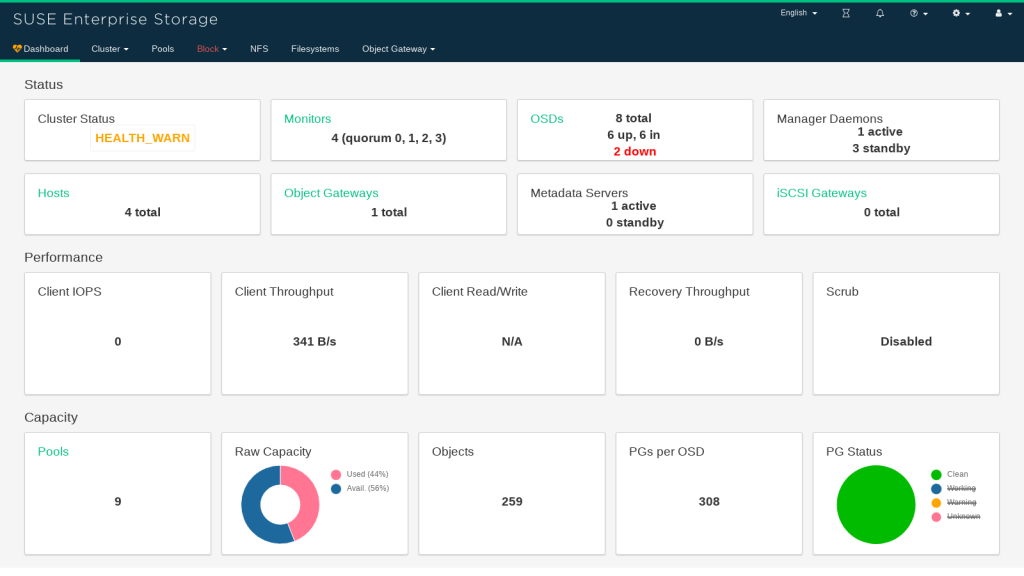The Data Center is Changing, so is SUSE Enterprise Storage: Say Hello to Version 6
You’ve come a long way. We have too.
The modern enterprise is in a state of flux: one foot is still firmly in the on-premise data center, and the other now just as firmly in the Cloud. Digital transformation is well underway as enterprises seek to boost their business agility, driven by the need to compete at cloud-native speed.
Data growth is explosive – a challenge for all regardless of business sector. There’s the vast quantity of data from mobiles – all that data on your phone (and everyone else’s). There’s the data from the IoT – with just about everything having a sensor these days – the much-celebrated fridge that orders groceries or adds to your shopping list has actually become a reality. If you’re in the medical sector, there’s the epic growth in X-Ray, and MRI data – with each new wave of improvements in scans bringing new data, and new processing requirements. Ordinary businesses selling on and offline have every increasing volumes of data of transactional history – things bought, and things nearly bought. Then of course there is video – reams of footage from stores, or the emergency services, or even field engineers – needs a home. And let’s not forget about email… which just so happens to have all those other sources of data in attachments. We’ve got lots of data, we’re going to have loads more, and a lot of it is unstructured.
Trying to Manage the Data Explosion with Traditional Storage is Unlikely to be a Winning Strategy.
Traditional storage has limitations. As data scales, customers run out of space more rapidly, giving rise to the need to buy additional equipment or upgrade to larger arrays – often by the invasive ‘forklift’ approach – where applications and business processes may need to be shut down while this work takes place. It’s expensive – not only the hardware and software costs but also in lost time and productivity. On top of that, many enterprises have plenty of data locked down in proprietary hardware, or stuck in old applications that can’t be virtualized, or are running on operating systems that are no longer supported. How do IT teams respond to this challenge?
The good news is that SUSE Enterprise Storage is keeping up with these changes – and enabling them – empowering enterprises to seamlessly manage storage in the hybrid world with the same management technology for both Cloud and on-premise, so you can accelerate your digital transformation and get ready for the future, today.
SUSE Enterprise Storage delivers true unified storage, with support for object, block and file in the same cluster – a single solution for structured and unstructured data. It is simple to manage, agile, durable, and reliable. Moving to ‘white box’ commodity hardware allows you to cut CAPEX on storage by as much as 50% and reduce OPEX too – by moving to a single tool to manage your heterogenous server environment – be that Linux, UNIX, Windows or VMWare or all of them. Say goodbye to the forklift upgrade – because you can now add capacity with almost infinite scale, when you need to, and without disruption. SUSE Enterprise Storage allows you to automatically balance data between on-premise and in the Cloud – so you can train one team to manage both environments and control head-count costs.
What’s New in SUSE Enterprise Storage 6?
SUSE is leading the way the introduction of the new Ceph Dashboard, a browser-based interface that enables you to easily manage and monitor pools, object storage daemons, Ceph nodes, iSCSI targets and portals, Ceph block devices, Ceph object gateways as well as NFS shares.
The new Elasticsearch capability allows you to search, correlate, and tag common data types in object stores, meaning you can effectively browse and manage data.
S3 policy-based tiering delivers improved performance and availability – optimizing data placement with the ability to automatically and efficiently move data between all tiers of storage based on policy, in your data center or in the cloud – thereby ensuring access to critical data when you need it.
Several improvements have been done to CephFS including the ability to define directory quotas to limit the amount users can store, the ability to take snapshots of directories to keep a frozen version of the directory structure as part of a backup and you can now create several CephFS instances for better separation of multiple users.
Operators will also appreciate the improvements provided for placement groups with the ability to autonomously scale and enhancements made to the balancing. They can now also shut down a cluster via a new UI option and flash the LEDs of storage enclosures for faster identification of disks that need to be replaced.
SUSE Enterprise Storage 6 provides a single, scalable, unified storage solution that meets all your storage requirements for containerized and cloud workloads no matter where they live.
To learn more about how SUSE Enterprise Storage can help you, visit https://www.suse.com/products/suse-enterprise-storage/.
Or contact SUSE to start your journey to world’s most cost-effective, unified, software-defined storage solution.
Related Articles
Mar 05th, 2024
No comments yet